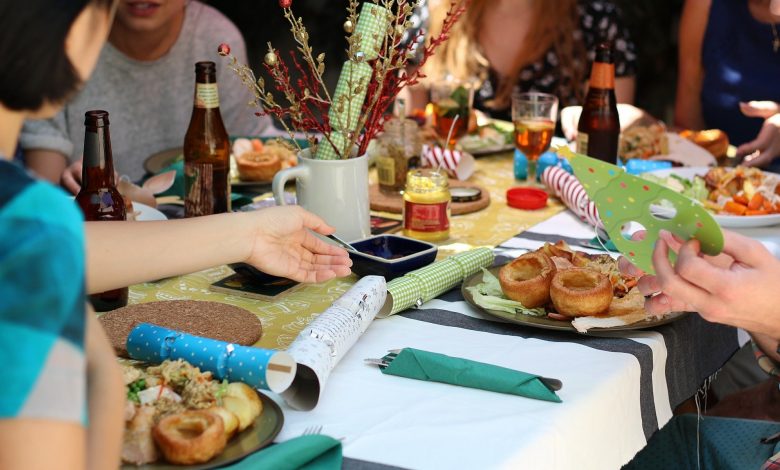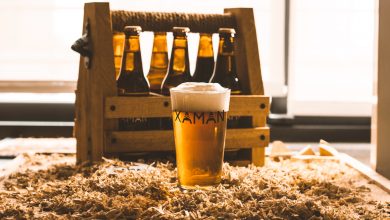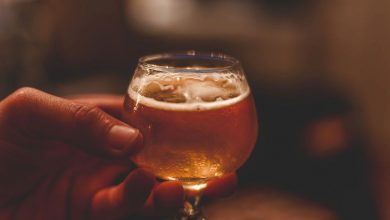How to Pair Beer with Food

Beer has grown to become one of the most popular alcoholic beverages today. It’s a favorite among people, regardless of whether it’s to be had at a party while socializing or paired with a nice, quiet meal at home. It can hold its own even when paired with delicious food, but like any beer lover would know, not all beers are the same.
Enjoying a meal with a beer in hand involves more planning than is evident at first glance. You want to pair the right kind of beer with the food best suited to it to be able to truly enjoy your experience. An inappropriate food-beer pairing can ruin the flavors of both the dish and the beer, resulting in an unpleasant dining experience. The key is to know which beer to pair with what food to be able to truly enjoy your dining experience to the fullest and get the most out of the flavors.
With the variety of beers out there and numerous flavor combinations of food possible, this task can seem impossible to get right, but you needn’t worry; we’ll guide you with some tips and food-beer combinations that you just can’t go wrong with.

Keys to Creating Food-Beer Pairings that Work
It was so much easier to identify the right beer to couple with food when beer choices were limited, but today, with the variety of beer choices available, the task is a lot more difficult, so before reaching out for a beer to pair with your favorite food, keep these tips in mind to ensure your pairing is one you’ll enjoy.
Decide on what you are trying to achieve with your food-beer pairing. Are you looking for the two to contrast or complement each other? Are you looking for your beer to cleanse the palate after each bite? What is the overall flavor impact you are looking to create through your pairing?
Complement
If you are looking to complement your dish, it is important to know about the aroma, mouthfeel, and flavors of the dish, as well as which beers will be able to emphasize these flavors. Refrain from allowing one of the two to dominate. Beers with higher alcohol content require stronger flavors to achieve a balance. For instance, if you are preparing a meal that has intense roasted aromas and flavors, understand what types of beer have the same flavors of roasts, or pair a fruity dish with a fruity beer.
Contrast
Contrasting is another way to pair food and beer if you are feeling a little risky, and your dish has a single overwhelming characteristic flavor or texture. In such cases, pairing the food with a contrasting beer can help to reduce the overpowering nature of the dominant food flavor/texture characteristic without adversely impacting the overall experience of the dish. For example, super spicy dishes, if paired with a beer that has high alcohol content, can enhance the heat and add fuel to the fire. Choosing a beer that has low ABV levels can help to cut the experience of spice and give you pleasant dining experience.
Cleanse
Carbonation, which results in the bubbles seen in beer, has a refreshing effect on the palate, acting as a cleansing agent and making you ready for the experience of the next bite. While most carbonation occurs from carbon dioxide released by yeast during the fermentation process, some beers may be carbonated with nitrogen, giving them a smaller carbonation bubble and resulting in a smooth, creamy mouthfeel. Carbonation is what makes pairing beer with rich, greasy, fatty, or salty foods act as a cleansing agent. The higher the carbonation, the higher is the cleansing effect of the beer on your palate.
Serving Sizes and Temperatures
Serving sizes and temperatures are also important considerations for food-beer pairings. Every dish does not have to be paired with a full beer. The idea is to make sure your guests can start and end their meal by drinking the beer, so think of it as half an ounce of beer for each bite on the plate. As such, lighter appetizers will require a smaller serving of beer, while more filling main courses may need an entire pint of beer. Serving temperature is also important to consider while pairing beer with food. In general, if a beer has higher alcohol content, it should be served at a warmer temperature, although exceptions to this rule do exist.
Although the above pointers can help you create enjoyable food-beer pairings, they are, by no means, hard and fast rules for how to pair beer with food; so, don’t be scared to get creative and be adventurous. As you explore, you may just stumble upon a food-beer combination that, in your opinion, will totally be worth it!

Understanding Beer Flavors and Styles to Pair with the Right Food
Beer Flavors
A variety of beer flavors can exist in different beer styles that need to be considered before pairing the beer with different types of food. Light body beers may be lagers, pilsners, or wheat/hefeweizen; medium body beers may be ales, IPA, dry stout, or brown porter; while heavy body beers may be imperial or cream stout.
Light Lagers
Light lagers are some of the most palatable varieties of beer and very popular for their crisp and gratifying taste, having no strong flavor, and seldom being hoppy or bitter. They are best for pairing with spicy food, although they can be enjoyed with almost any kind of food. Foods with a generous amount of garlic pair well with light lagers, including Italian, Spanish, Mexican, and Asian food. Some popular food pairings include French fries, buffalo wings, noodles, fried fish, and hot dogs.
Dark Lagers
This beer is crafted from roasted malt, and caramel syrup is added several times to sweeten the beer. The roasted malts impart a nutty flavor to the beer, and the caramel offers a slight hint of sweetness, even though it’s not overwhelming. They pair well with conventional European food, including sausages, burgers, goulash, pizzas, bangers, and mash.
Wheat Beers/Hefeweizen
Wheat beers use grains of wheat and barley in the brewing, resulting in a smoother texture and milder carbonation. Brewers often introduce citrus and other fruity aromas to it, and the versatile beer can be paired with several foods, although best suited to lighter food like salads, light cheeses, sushi, seafood, fruits, and lighter desserts like fruit trifle, lime pie, or strawberry shortcake.
Amber Ales
Amber ales are distinguished by a mild mouthfeel and colors ranging from a dark reddish-gold to amber. Such beers have a heavy malt flavor, and sweet caramel flavors accompany the roasted malt taste. Such beers have no overly sweet taste, and several amber ales have a crisp and dry finish. Such beers have a light, floral aroma, although the hops flavoring isn’t strong. They serve as good palate cleansers and can be paired well with mildly spicy or smoked foods, such as barbecue, jerk chicken, brisket, smoked bacon, pulled pork, chili, and pizzas.
India Pale Ales
India pale ales, more popularly called IPAs, are among the most popular beer styles in today’s craft-brewing market and usually have a moderate amber color, with a very bitter taste. Most brewers apply citrus or herb notes to the beer to make the bitterness more palatable. There are also double IPAs, besides normal IPAs, that are produced with much more hops and possess a heavy bitter flavor. There are no clear guidelines when it comes to food combinations with these due to the sheer diversity of IPAs on the market, but generally, pairings with food that function for all forms of IPAs include spicy foods, such as curry and kimchi, or rich, sweet desserts like crème brûlée, caramel apple tart, carrot cake. They can serve as palate cleansers by cutting through salty, sweet, or fatty foods, help to complement steamed, smoked, or broiled food, and can be used to contrast spicy foods.
Brown Ales
Brown ales have strong flavors of chocolate and coffee, as is the case with stouts and porters, but they aren’t as hoppy or bitter as some other medium-colored beers. In particular, English brown ales variants tend to have a dry and nutty taste. They complement well with steaks, barbecue, roast pork, grilled salmon, sausage, sushi, and fish, and are capable of cutting through spicy food with their distinctive sweetness.
Porters
Porters came from London, and the initial variety was dark and heavy, rendering them popular among the middle-class. Porters today are milder and are available in a variety of types and flavors but retain their trademark dark color, roasted flavor, and toasty aroma. Porters are produced with brown roasted malts that lend the beer with heavy chocolate, caramel, and coffee notes. Given the thickness and silkiness of porters and stouts, porters have a crisper finish than stouts. Porters complement roasted/smoked/barbecued foods, including mashed potatoes, braised food, steaks, crab, and lobster. They also go well with desserts that are chocolate-flavored, chocolate peanut butter cookies, and toasted coconut cookie bars.
Stouts
Stouts are distinguished by heavy chocolate and coffee suggestions and a super-smooth texture. Stouts are renowned for their rich, dark shade and roasted flavor comparable to porters. They aren’t particularly high in alcohol content, bitterness, or flavor, given their presence, and there are many moderate, well-rounded forms of stout. They pair well with rich, savory food, grilled steaks, barbecue, lobster, and shellfish. Because stouts have a chocolate-like taste and are comparatively low in alcohol content, they are the perfect match for many dessert types, including chocolate truffles, mousse, espresso cakes, and cream puffs.

Styles of Beer
Signature flavors of beer, their style variants, as well as foods that pair well with them are as follows:
Crisp
Crisp beers are lighter, cleaner, and refreshing in flavor. They go well with leafy greens and salads, spicy cuisines, sushi, light seafood, and roast chicken. Popular styles in the delicate fruit flavor crisp include cream ale, Kölsch, wheat ale, and English and American Blonde ale. Malt-accented crisp flavor styles include pale lager, Helles lager and Helles bock, amber lager, Vienna lager, and Märzen/Oktoberfest. Brisk hoppiness flavor styles include Pilsner, India Pale Lager, Kellerbier/Zwickelbier, and Imperial Pilsner.
Hop
Hop beers have pleasant aromas and notable bitterness. Such beers pair well with aged/hard cheeses, burgers, deli sandwiches, fried foods, and rich meats. Earthy and dry hop flavor styles include English India Pale Ale, Ordinary Bitter, English Pale Ale, and Belgian IPA. Malty backbone flavor styles include California Common, American Imperial Red Ale, American Barleywine, as well as American Amber Ale. Bold, herbal, and citric flavor styles include American Pale Ale, American India Pale Ale, American Fresh Hop Ale, and American Imperial IPA.
Malt
Malt beers have malty flavors and sweetness, as well as the taste of fruit, toast, nuts, caramel, or toffee. Good pairings for these beers are with root veggies, seared pork, pizzas, blue cheese, poultry, and cured meats. Toasty and nutty flavor styles include English Mild Dark Lager, Dunkel Lager, Düsseldorf Alt, Eisbock, English Brown Ale, Dunkles Bock, and Doppelbock. Fruit and toffee flavor styles include Biére de Garde, Best Bitter Scottish Ale, Extra Special Bitter, Irish Red Ale, Belgian Pale Ale, English Barleywine, English Strong Ale, Wee Heavy/Scotch Ale, and Wheatwine.
Roast
Roast beers utilize heavy malt grains to obtain cocoa and coffee flavors and a rich mouthfeel. Such beers pair well with grilled pork, dessert, poultry, barbecue, seafood, and raw shellfish. Soft and silky roast flavor styles include Schwarzbier, Sweet Stout, Brown Porter, Oatmeal Stout, Imperial Brown Ale, Foreign Export Stout, Imperial Porter, and Belgian Stout. Dark and dry roast flavor styles include American Brown Ale, Dry Stout, Black IPA, Imperial Stout, Robust Porter, and American Stout.
Smoke
Smoke beers use malts that are smoked over a variety of wood fires. They pair well with pork cuts, raw fish, sausages, and other meats. Subdued smolder smoke flavor styles include Smoked Beer, Smoked Porter, and Steinbrau. Spicy and meaty smoke flavor styles include Rauchbier.
Fruit and Spice
Excellent pairings for fruit and spice beers, which have a powerful fruit and spice taste, include lighter fish, crab, sausages, spicy cuisines, pizzas, mussels, lobster, cured meats, poultry, salads, and pizza. Bright flavor styles include Witbier, Hefeweizen, Kristalweizen, Belgian Blond Ale, Saison, Belgian Strong Blond Ale, Gruit Ale, Belgian Strong Pale Ale, and Tripel. Dark flavor styles include Belgian Dark Ale, Dubbel, Dunkelweizen, Belgian Strong, Dark Ale, Quadruple, and Weizenbock.
Tart and Funky
Tart and funky beers, which are known for their sour, earthy, and rustic flavor, pair well with clams, rich meats, funky cheeses, mussels, oysters, and fruit desserts. Delicate flavor styles include Berliner Weissbier, Faro, and Gose. Fruity and vinous flavor styles include Flanders Oud Bruin, Wild Ale, Flanders Red Ale, and Traditional Fruit Lambic. Earthy flavor styles include Saison, Gueuze Lambic, Wild Ale, and Traditional Unblended Lambic.



